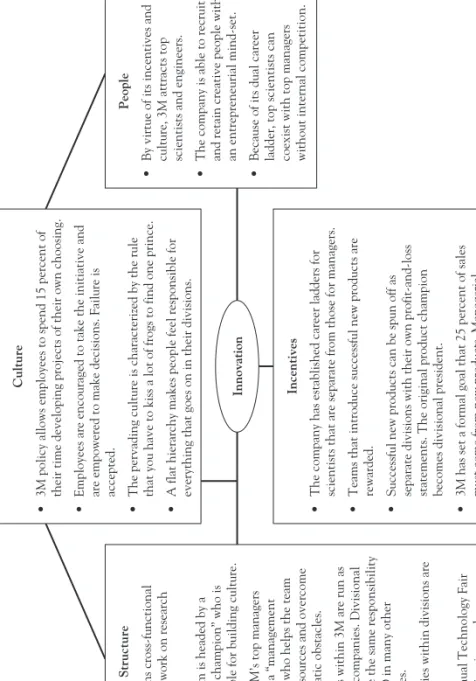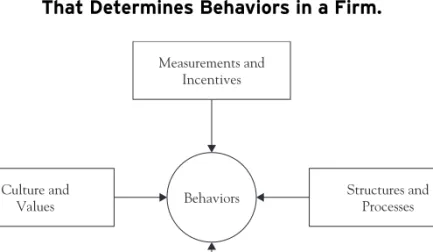Specifically, I propose that a prerequisite for creativity is a fundamental questioning of the firm's existing business model. Some companies shared their new business model and were successful (Singapore Airlines), but other companies did the same and were unsuccessful (Continental Airlines).
THE INNOVATION IS IN THE BUSINESS MODEL
New business models eventually invade the established market and cannibalize the existing business model. Furthermore, suppose that the established firm decides to proceed with a new business model.
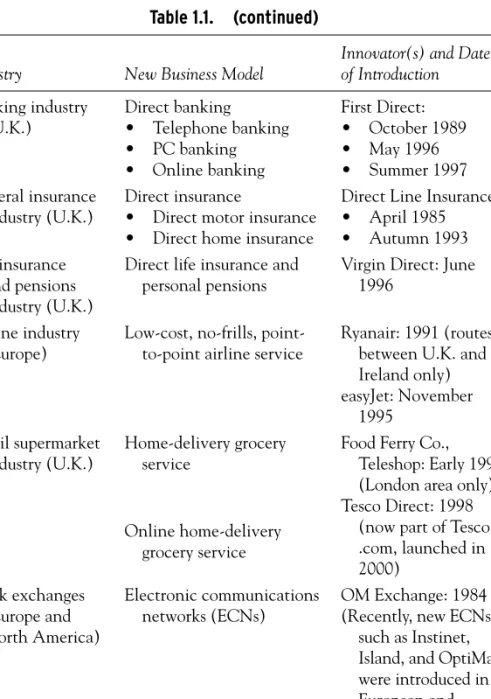
DISCOVERING NEW BUSINESS MODELS
So Howard Schultz, the president of Starbucks, doesn't believe he's in the coffee business. Instead, it is concerned with creating a consumer experience of which coffee is a part. Many of the business model innovators listed earlier in the book started this way—first by identifying a customer segment (usually but not always at the lower end of the market) or a customer niche that was not adequately served by existing competitors.
Overall, therefore, business model innovators emerge as follows: At any given time, the mass market is served by a number of competitors. This suggests that the important thing for business - model innovators is to choose a niche whose needs will grow in the future - that is, to choose the right niche. Is there a large enough customer segment that could be interested in the new value proposition.
An effective way, as the GE example shows, is to develop a sense of urgency in the company by deliberately creating a positive crisis. It is worth emphasizing again that coming up with new ideas is one thing, actually succeeding in the market is another. Questions will only take place if the leaders create a sense of urgency (or a positive crisis) in the organization.
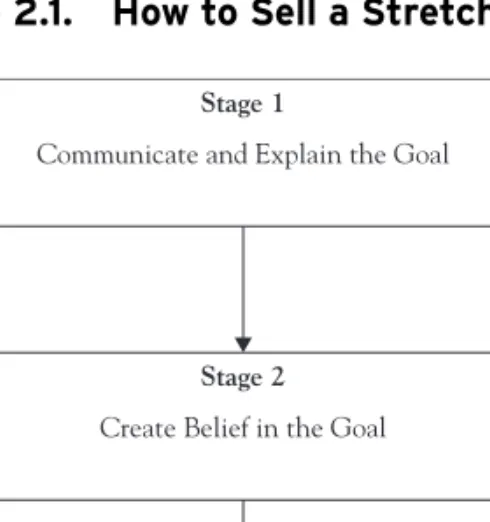
CREATIVITY IS NOT ENOUGH : FROM DISCOVERING
TO IMPLEMENTING NEW BUSINESS MODELS
Consider, for example, the case of Edward Jones—the brokerage that built its success on serving the needs of individual investors in rural America. This means that the company has been able to efficiently serve those high-risk customers that no one else wanted, while simultaneously developing one of the lowest cost structures in the industry. It is also true of a company that is recognized as a radical innovator in the mobile telecommunications market - Smart Communications, of the Philippines.
Smart estimated that of the more than 500,000 dealers, approximately 90 percent were micro-enterprises (neighborhood shops, including Sari - Saris, housewives and students acting as traveling agents). In 2004, the company won the Frost and Sullivan Asia Pacific Technology Award for "Most Innovative Application of the Year" and "Best Mobile Application or Service for the Consumer Market" at the GSM Association Congress. But Smart Load didn't just garner accolades - it also dramatically increased analysts' ratings of the viable mobile market in the Philippines.
Vertical integration is the key to Inditex's innovation in the apparel industry, but it is information and communication technology that has enabled Inditex to deliver the benefits of this integration at the speed of the Internet. But the company's explosive growth from the early 1990s, and the way that growth was supported by technology, remains a testament to the power of networked IT. Edward Jones' investment in satellite technology was not about shaving costs from the existing business – it was about a transformative upscaling of the Jones business model.
Therefore, by keeping the two business models separate, a company can prevent its existing processes and culture from stifling the new business model. An interesting scenario arises when a new market is strategically similar to an existing business, but they face serious conflicts. Similarly, some companies have integrated a new business model and been successful (for example, SMH), while other companies have done the same and failed (for example, HMT International).
The new business model often presents few conflicts with the existing business model of a company. As with the separation strategy, the challenge a company faces in the gradual integration strategy is to keep the new business model protected from the mindset and policies of the existing company while trying to exploit synergies between the two companies. . As with the integration strategy, the challenge faced by the companies in the phased separation strategy is to get the two companies to exploit any synergies between them while keeping the new business model protected from the existing business.
Separation is the preferred strategy when the new market not only differs strategically from the existing market, but also when the two business models face serious compromises and conflicts. In such a case, embracing the new business model through the company's existing organizational infrastructure is the superior strategy. The right question to ask is, should we separate the new business model or not?
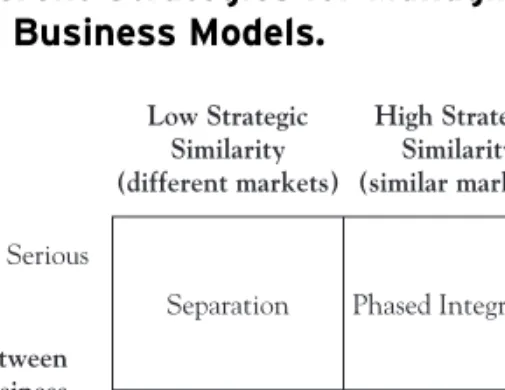
SEPARATION IS NOT ENOUGH: HOW TO ACHIEVE
Leclerc
This organization balances quite a few conflicting forces evenly: it has achieved low cost and differentiation at the same time; it is highly decentralized and yet centralized at the same time;. Each store is owned and operated by individuals who choose to trade under the Leclerc name. However, they must agree to comply with certain norms and rules – the primary one being.
In addition, no one – not even a member of the Leclerc family – may own more than two stores. In addition, each store can find its own suppliers and negotiate its own prices. The use of the Leclerc name by all also achieves advertising and promotional benefits and reduces costs.
In addition to all this, each store owner is active in the management of the entire organization. It is interesting that each store has its own unique culture (primarily created by the personality of the store owner), but a common Leclerc culture still permeates the entire organization. It is this shared culture that allows so much autonomy and freedom without the fear that someone, somewhere, will do something nasty.
RESPONDING TO
Adopting the new business model is certainly one way to respond, but it is not the only one. More often than not, the new way of competing creates a new market on the periphery of the established market. In such cases, the company may be better off simply ignoring the new business model.
Therefore, if the answer to the relatedness question is not a clear yes, the incumbent firm may be better off ignoring the new business model. A fourth option available to established firms is to simply adopt the new business model. What really creates problems for incumbents is the fact that the new business model conflicts with the established way of competing.
Compared to companies that did not embrace the new business model, those that did felt that the new market would grow significantly in the future. The fifth option available to established firms is to abandon their existing business model and wholeheartedly embrace the new business model. All of this means that established firms can respond to a business model innovation introduced by another firm by embracing the new way and scaling it up to a mass market.
WHEN WOULD ESTABLISHED FIRMS DISCOVER NEW
In the 1960s, Xerox dominated the copier market by following a well-defined (and successful!) strategy. John Sculley (Apple's CEO) called it "nothing short of a revolution" and predicted it would usher in the "mother of all markets", with PDAs representing a trillion-dollar market. Both examples highlight a simple idea—something noted a hundred years ago by the famous economist Joseph Schumpeter: successful innovation is essentially an integration process that requires the integration of two different activities—discovery.
In fact, the firm that comes up with a new idea—the pioneer—is rarely the one that creates a mass market from that idea. You see this emphasis on the technical features of the product in the early stages of all young markets. This emphasis on the technical aspects and functionality of the product early in the evolution of a new market is understandable.
They don't particularly care that the product is fancy or expensive – they just want to get their hands on the newest toy on the market. The evolution of the disposable diaper market in the United States illustrates this point well. In the years following Pilot's introduction, Microsoft developed its own handheld operating system—Windows CE—and hardware vendors such as HP, Casio, and Philips entered the handheld market carrying the operating system.
RETHINKING INNOVATION IN THE BIG FIRM
Consider, for example, 3M, recognized worldwide as one of the most innovative companies in the world. Over the past fifty years, academics and consultants have developed a wealth of ideas about how a company can improve its existing organizational environment to promote this type of innovation - the next box provides a (long) list of ideas. Incentives • The company has created career ladders for scientists that are separate from those for managers.
Ensure that top and middle management agree on the desirability of the vision and objectives of the corporate strategy. Keep risk groups small to take advantage of the small business atmosphere that will develop. Make sure that the visionary entrepreneur, person or group responsible for developing the new idea remains attached and accountable to the new idea until it is implemented and either succeeds or fails.
We are not satisfied with how innovative they are, we came up with all these "valuable" ideas and advice to make them more entrepreneurial so that they too - like all those nimble and pioneering start-ups - can create new markets and lay the foundations for the industries of the future. This is because they already have a set of skills and attitudes they need to compete successfully in their existing businesses. This set of skills and attitudes make them good at exploitation, which is exactly what they need to do well in their mature businesses.
